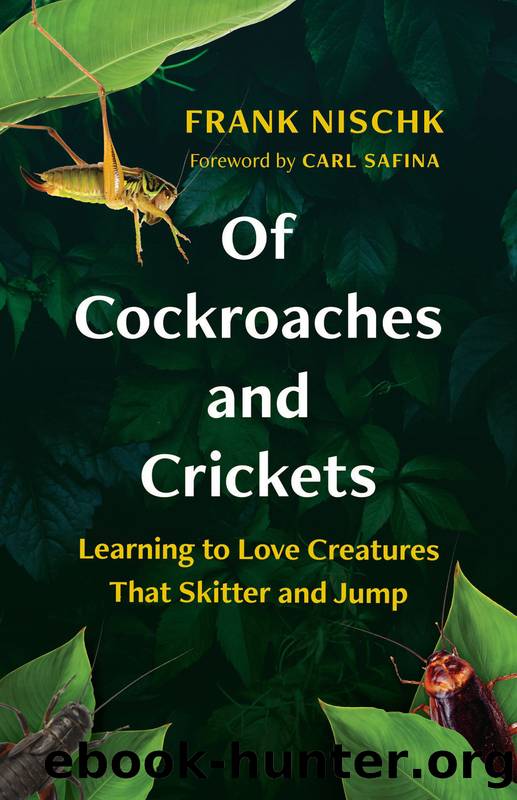Of Cockroaches and Crickets by Frank Nischk

Author:Frank Nischk
Language: eng
Format: epub
Publisher: Greystone Books
Published: 2023-06-15T00:00:00+00:00
IT IS SURELY no accident that animal groups such as insects, whose members are especially small, are for the most part more species-rich than, for example, the considerably larger mammals. A river in the rainforest might be a barrier for a tiny grasshopper, but not for a jaguar or a tapir. And so, populations of the tiny representatives of the animal world are more often isolated and develop into different species.
Another reason for the enormous diversity of insects in the tropics is the high number of food specialists that crawl and fly through the forest. There are herbivores that feed on only one or just a few species of plants. Many plants âdefendâ themselves against insects that want to nibble on them by releasing poisons into their leaves and seeds, which spoil the appetites of most insects. Some insects, in turn, develop resistance to these poisons, overcoming the plantsâ defense mechanisms. The advantage for the insects is that the previously forbidden fruit is now theirs to enjoy without competition from other herbivores. Populations of specialists develop on different trees and, thanks to their specialized diets, remain isolated from their brothers and sisters on other trees with different defensive mechanisms. Thus, plants become drivers of insect evolution.
The relationship is not a one-way street. The plants then develop new chemical weapons to combat the insects that have adapted to eating them. New plant species develop. Their defensive strategies are cracked. The competition never ends and continually increases species diversity as long as the forest survives.
Eating and being eaten is by no means the only relationship between the different life-forms in a tropical forest. There are the relationships between flowers and pollinators, parasites and hosts, carcasses and carrion eaters, and trees and epiphytes. Insects lay their eggs on plants; birds, bats, and ants spread plantsâ fruits and seeds. This list is just a small fraction of the wide-ranging web of relationships between animals, plants, fungi, bacteria, and viruses. This web is particularly tightly woven in the tropics. Here, many life-forms have undergone a striking degree of specialization, which means the niches the inhabitants of the tropics claim as their own are correspondingly small, and so more species can live in close proximity and survive.
Download
This site does not store any files on its server. We only index and link to content provided by other sites. Please contact the content providers to delete copyright contents if any and email us, we'll remove relevant links or contents immediately.
Sapiens: A Brief History of Humankind by Yuval Noah Harari(13085)
The Tidewater Tales by John Barth(12040)
Do No Harm Stories of Life, Death and Brain Surgery by Henry Marsh(6345)
Mastermind: How to Think Like Sherlock Holmes by Maria Konnikova(6258)
The Thirst by Nesbo Jo(5800)
Why We Sleep: Unlocking the Power of Sleep and Dreams by Matthew Walker(5665)
Sapiens by Yuval Noah Harari(4560)
Life 3.0: Being Human in the Age of Artificial Intelligence by Tegmark Max(4524)
The Longevity Diet by Valter Longo(4457)
The Rules Do Not Apply by Ariel Levy(3916)
The Immortal Life of Henrietta Lacks by Rebecca Skloot(3834)
The Body: A Guide for Occupants by Bill Bryson(3823)
Why We Sleep by Matthew Walker(3782)
Animal Frequency by Melissa Alvarez(3764)
Yoga Anatomy by Kaminoff Leslie(3714)
Barron's AP Biology by Goldberg M.S. Deborah T(3639)
The Hacking of the American Mind by Robert H. Lustig(3590)
All Creatures Great and Small by James Herriot(3529)
Yoga Anatomy by Leslie Kaminoff & Amy Matthews(3409)
